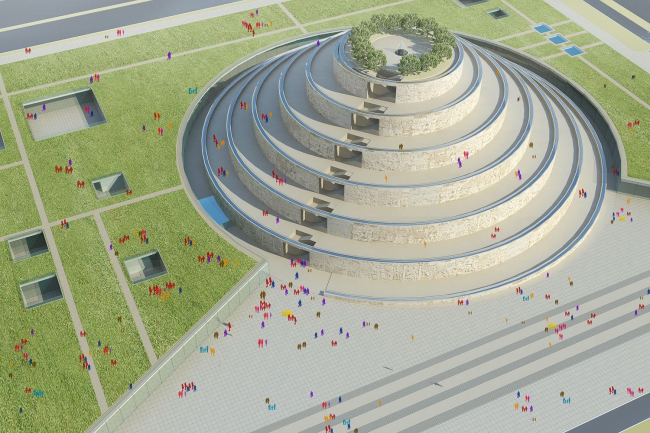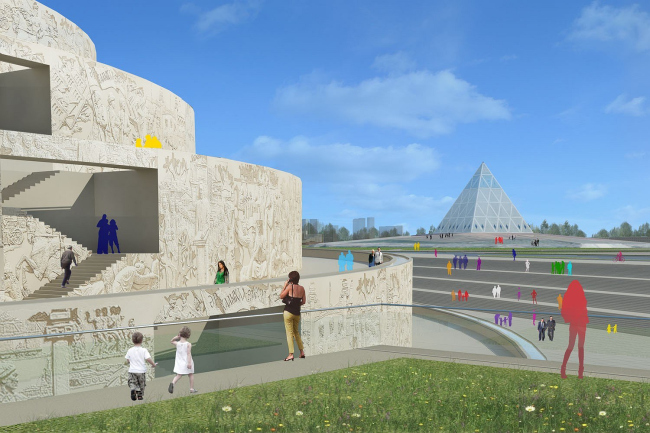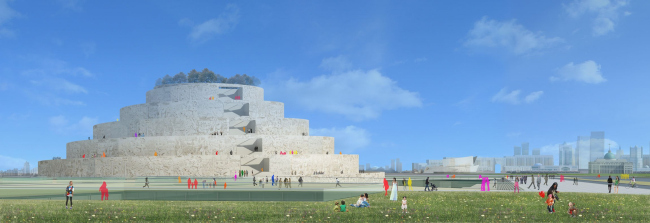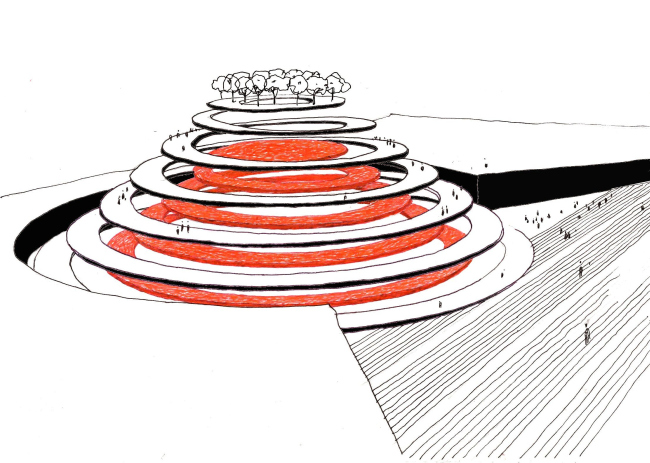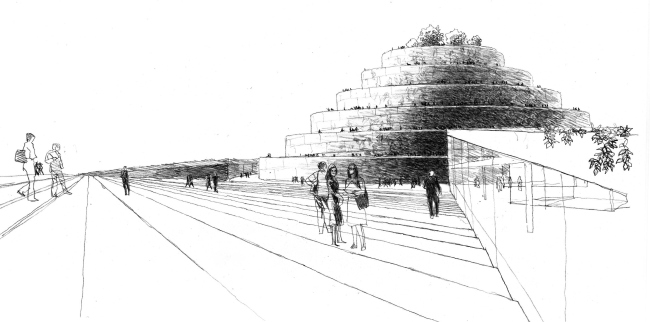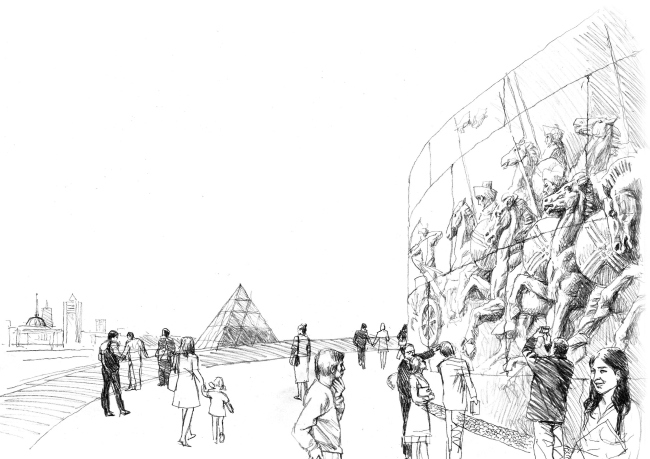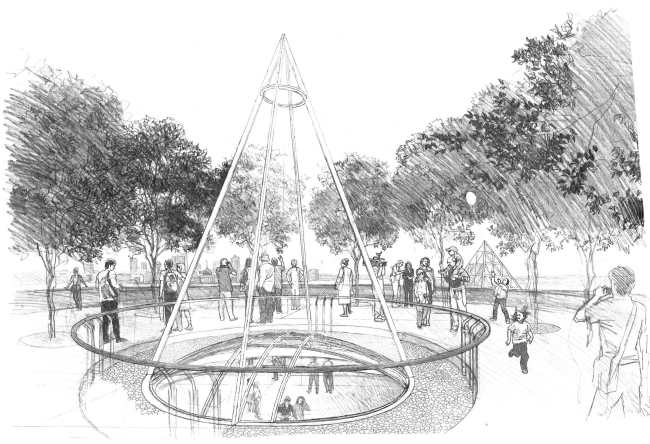|
Published on Archi.ru (https://archi.ru) |
|
| 06.10.2010 | |
|
Knowledge pyramid |
|
|
Anna Martovitskaya |
|
| Architect: | |
| Nikita Yavein | |
| Studio: | |
| Company: | |
|
In August there have been held an international architectural contest on the best project of History Museum of Kazahstan building in Astana. Architectural company "Studio 44" from St. Petersburg was among the participants. This is the second project Nikita Yavein’s team developed for Kazakhstan. As with the Art Palace for Children, the architects used Kazakh national architecture motifs. The palace was a periphrase o fthe traditional nomad yourt, but now the prairie pyramid inspired the authors and principle of spiral motion became the basis of the architectural concept. Museum area is arranged spirally, as well as its expositions and steams of visitors. There are two main spiral routes. First goes within the building and walking along a visitor will be able to make a gradual trip to the history of Kazakhstan from the earliest times to the present day. The second spiral route wrapped the building outside – it is a walking path thrown along the accessible roof area. You can walk up to the top of the building, enjoying views of Astana and bas-reliefs representing Kazakh history and forming a continuous band on the facades. Importantly at each floor external and internal ramps joined by special passage, so you can switch from studying history to modern sights any time. Thus, the museum structure can be described as two nested ziggurat. Thought, the architects, do not deny the obvious similarities of the ancient structures, but insist the their building was inspired mainly by burial mound - prairie pyramids, the safest guardians of traces of nomadic people material culture. Often burial mounds on the territory of Kazakhstan and the Altai had a stepped form “a la ziggurat” - semantics of the both building types referred to the image of a sacred mountain, crowned by the world tree. By the way, there will be a few trees on the top level of the building which will surround the pyramidal top of the glass atrium.  NoneNoneNoneArchitectural concept of the Museum of History of KazakhstanCopyright: © Studio 44NoneNone NoneNoneNoneNoneNone |
|
